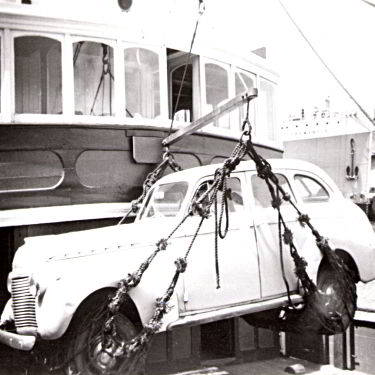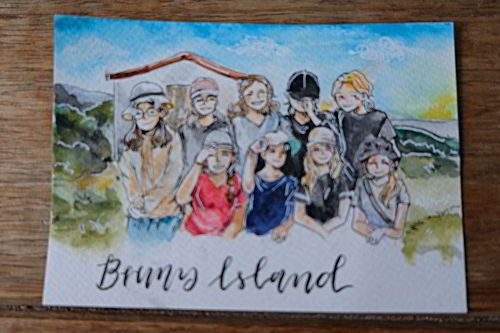Following the coastline of Bruny Island, you might chance upon a rock formation that bears a striking resemblance to one of the great explorers in history. Bruni D’Entrecasteaux has not only lent his name to our Island of wonders but also his silhouette …and if the fates had been a little different he would have certainly have discovered the Strait that made us an island state, five years before Bass. D’Entrecasteaux having identified the same Venturi effect as Bass, felt obliged to continue his search for La Pérouse.
“with fresh south & south west winds blowing, I was tempted to follow the east coast of van Diemen’s Land up to Cape Hicks. I wanted to clarify if a Strait existed south of this cape, just as this idea had passed my mind during the crossing of Terre de Nuyts to Port du Sud, on account of the violent currents we experienced between parallel thirty- two and thirty-six degrees south. But we were much too far away from the latitudes where we could have hoped to find M. de La Pérouse, to stop and attempt a reconnoitring that we would have been obliged to leave unfinished, even if we had been lucky enough to obtain good results.”
In 1791 Bruni D’Entrecasteaux on the Recherche, along with Huon de Kermadec on the Esperance was chosen by Louis XVI to lead the search for La Pérouse, and further exploration and scientific discoveries.
It was during the voyages of 1792 that D’Entrecasteaux discovered the channel that bears his name and the river that was named in honour of Huon. The discovery of the channel cemented the knowledge that the land mass on which Adventure Bay was situated was indeed an island, one to which Admiral Bruni D’Entrecasteaux would give his name.
Returning to Van Diemen’s land in 1793 they partially circumnavigated Bruny Island. Travelling from Recherche Bay along the Channel once more, they moved further north discovering the Derwent River which he was to name La Rivière du Nord, and on to Adventure Bay. Thereby joining the long list of previous and future explorers to have landed there.
“It would be vain for me to attempt to describe my feelings when I beheld this lonely harbour lying at the world's end, separated as it were from the rest of the universe- 'twas nature, and nature in her wildest mood.
At each step we met here the beauties of that nature abandoned to herself, there the marks of her decay, trees of an immense height and proportionate diameter, their branchless trunks covered with evergreen foliage, some looking as old as the world; closely interlacing in an almost impenetrable forest, they served to support others which, crumbling with age, fertilized the soil with their debris;
nature in all her vigour, and yet in a state of decay, seems to offer to the imagination something more picturesque and more imposing than the sight of this same nature bedecked by the hand of civilized man. Wishing only to preserve her beauties we destroy her charm, we rob her of that power which is hers alone, the secret of preserving in eternal age eternal youth”
“J E tenterois vainement de rendre la sensation que me fit éprouver l'aspect de ce havre solitaire, placé aux extrémités du monde, et fermé si parfaitement, que l'on peut s'y considérer comme séparé du reste de l'univers.
Tout s'y ressent de l'état agreste de la nature brute. L'on y rencontre à chaque pas, réunies aux beautés de la nature abandonnée à elle-même, des marques de sa décrépitude; des arbres d'une très-grande hauteur et d'un diamètre proportionné, sans branches le long de la tige, mais couronnés d'un feuillage toujours vert : quelques-uns paroissent aussi anciens que le monde ; entrelacés et serrés au point d'en être impénétrables , ils servant d'appui à d'autres arbres d'égale dimension, mais tombant de vétusté et fécondant la terre de leurs débris réduits en pourriture.
La nature, dans toute sa vigueur, et tout-à-la-fois dans un état de dépérissement, offre, ce semble, à l'imagination quelque chose de plus imposant et de plus pittoresque que la vue de cette même nature embellie par l'industrie de l'homme civilisé: voulant n'en conserver que les beautés, il en a détruit le charme; il lui a fait perdre ce caractère qui n'appartient qu'à elle, d'être toujours ancienne et toujours nouvelle.”
The Venturi effect describes an increase in velocity as fluid is forced through a constriction. Named after Italian physicist Giovanni Battista Venturi (1746-1822). This phenomenon is observed in earth sciences as increased wind speed and decreased pressure as air flows through a mountain pass or as an increased current as tides propagate through a coastal inlet. In both these cases flow accelerates to conserve volume.
Hill, D. (2013). The great race. 1st ed. Australia: William Heinemann.
Entrecasteaux, A., Duyker, E., Duyker, M. and Rossel (2001). Voyage to Australia & the Pacific, 1791-1793. 1st ed. Melbourne: Melbourne University Press, pp.32-59,139-156.
Hogg, G. (1938). D'Entrecasteaux: An Account of His Life, His Expedition, and His Officers by G. H. HOGG (Read 12th April 1937, R.S. Tas.). [online] Eprints.utas.edu.au. Available at: https://eprints.utas.edu.au/13231/1/1937-Hogg-DEntrecasteaux.pdf [Accessed 28 Jun. 2018].
ii (Hogg, 1938)
iii Voyage de D'Entrecasteaux a la recherche de La Perouse, ed. (Elisabeth-Paul-Edouard) de Rossel – Joseph-Antoine Bruni D'Entrecasteaux, 1792
More Bruny Island Journal
Bruny Island AU Retreats & COVID-19
We care deeply about our guests, community and employees. The COVID-19 pandemic affects all of us and we need to consider our actions & interactions in this ever-changing situation.
Travelling to South Bruny Island
If you live on an island you may as well enjoy the journey, because getting here is just a fact of life, as it has been for generations of people who have called Bruny Island home
The journey of Te Rapunga from New Zealand to Tasmania
This video shows the journey of the Te Rapunga from a back yard in Auckland, New Zealand to the Denman Marine restoration yard in Hobart, Tasmania.
IGS art camp at Bruny Island Lodge
Students and teachers from International Grammar School Sydney stayed Bruny Island Lodge for an art camp. Using inspiration from the natural surroundings, they worked together to create works of art.


